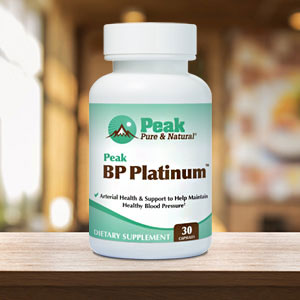Get Easy Health Digest™ in your inbox and don’t miss a thing when you subscribe today. Plus, get the free bonus report, Mother Nature’s Tips, Tricks and Remedies for Cholesterol, Blood Pressure & Blood Sugar as my way of saying welcome to the community!
The good news thick thighs could reveal about your blood pressure

It’s been drilled into our heads for decades: fat is bad. As of 2017-18, about 42 percent of American adults were classified as obese. And with obesity comes a higher risk of all kinds of disorders, including heart disease, stroke, type 2 diabetes and certain types of cancers.
Further study has revealed layers to the belief that all fat is bad. Carrying fat around the waist, for example, is known to be especially dangerous. In addition to the conditions mentioned above, excess belly fat has related to Alzheimer’s disease, particularly in older women. In men, it’s typically a predictor of heart problems.
But recent research has indicated fat in certain places may not always be a harbinger of a health problem on the horizon. In fact, having fat around the legs may indicate you’re at lower risk for high blood pressure.
Fat legs and hypertension
A study by the American Heart Association found that adults with a higher percentage of total body fat tissue in their legs were less likely than those with a lower percentage to have hypertension, regardless of their age, sex, race and ethnicity, education, smoking, alcohol use, cholesterol levels and waist fat.
“Ultimately, what we noted in this study is a continued discussion of ‘it’s not just how much fat you have, but where the fat is located,’” says principal investigator Aayush Visaria, M.P.H. “Although we know confidently that fat around your waist is detrimental to health, the same cannot be said for leg fat. If you have fat around your legs, it is more than likely not a bad thing and may even be protecting you from hypertension, according to our findings.”
Applying this information to our daily lives is not easy. It’s not as if we can control where our bodies deposit fat. Or can we?
Spot reduction? Not so fast
The idea of spot reduction of fat from a particular part of the body has floated around the exercise community for a while. But there’s no clear evidence that it works for everyone. If you have fat arms, it’s not necessarily true that you can get rid of that fat by exercising your arms more.
When people gain fat, it’s not because they’re making more fat cells. It’s because the fat cells they already have are growing as those cells store more lipids. And where these fat cells are concentrated on the body differs from person to person depending on things like sex, body shape, hormones, genetics and insulin sensitivity.
In other words, if you’re prone to carrying fat around your middle, you can’t suddenly decide to carry it around your thighs instead.
One study showed how unreliable spot reduction can be by monitoring people who were weight training with their non-dominant leg. At the end of the training period, there was no significant change in the body fat percentage of the legs. But there was a decrease in fat in the arms and trunk. So, some fat was burned off by the training — just not from where it was intended to be.
Spot reduction may be a pipe dream, but you can still get rid of that stubborn fat no matter where it’s hanging out — as long as you’re burning more calories than you’re consuming.
How should you use this information?
So, though the medical community believes this new information about the connection between fat in the legs and a lower blood pressure risk may be beneficial in how it affects patient care, what does it mean for the rest of us?
It brings home the fact that, overall, body fat — good or bad, here or there — has an impact on our health, and that working to maintain a healthy weight must be part of disease prevention and health promotion.
One of the best ways to do that is through full-body exercise. A mix of strength training, high-intensity interval training (HIIT) and cardio is often recommended as the most effective way to lose fat and gain fat-burning muscle.
Full-body weight training is considered more effective for weight loss than training one muscle at a time. Try a routine that incorporates moves like deadlifts, squats, rows, bench presses and overhead presses.
HIIT differs from cardio in that it focuses specifically on getting your heart rate up to 90 percent of its maximum. It’s important to be careful when doing HIIT because it can be easy to injure yourself, or to not work hard enough for it to make a difference. A personal trainer can help you find the right balance between these extremes.
But as you may have read here previously, the best exercise for you is the one that you can stick to. Discover what that may be and resolve to make it a habit.
The bottom line
While it’s interesting that having fat legs could protect you from high blood pressure, it’s no substitute for maintaining a healthy weight through exercise and a good diet. Check your blood pressure regularly, and if it’s straying into the high range, try making lifestyle changes to ensure your weight remains in a range that’s conducive to good health. Also, make sure you limit alcohol and salt intake, avoid smoking and manage your stress levels.
Editor’s note: Did you know that when you take your body from acid to alkaline you can boost your energy, lose weight, soothe digestion, avoid illness and achieve wellness? Click here to discover The Alkaline Secret to Ultimate Vitality and revive your life today!
Sources:
Adult Obesity Facts — U.S. Centers for Disease Control
Higher risk of dementia in English older individuals who are overweight or obese — International Journal of Epidemiology
Fatter legs linked to reduced risk of high blood pressure — American Heart Association
Can You Really Target Fat in Specific Areas of the Body? — Aaptiv
Fitness myth busted: You can’t control where on your body you lose weight from — Australian Broadcasting Company News
Regional Fat Changes Induced by Localized Muscle Endurance Resistance Training — The Journal of Strength and Conditioning Research
Changes You Can Make to Manage High Blood Pressure — American Heart Association













